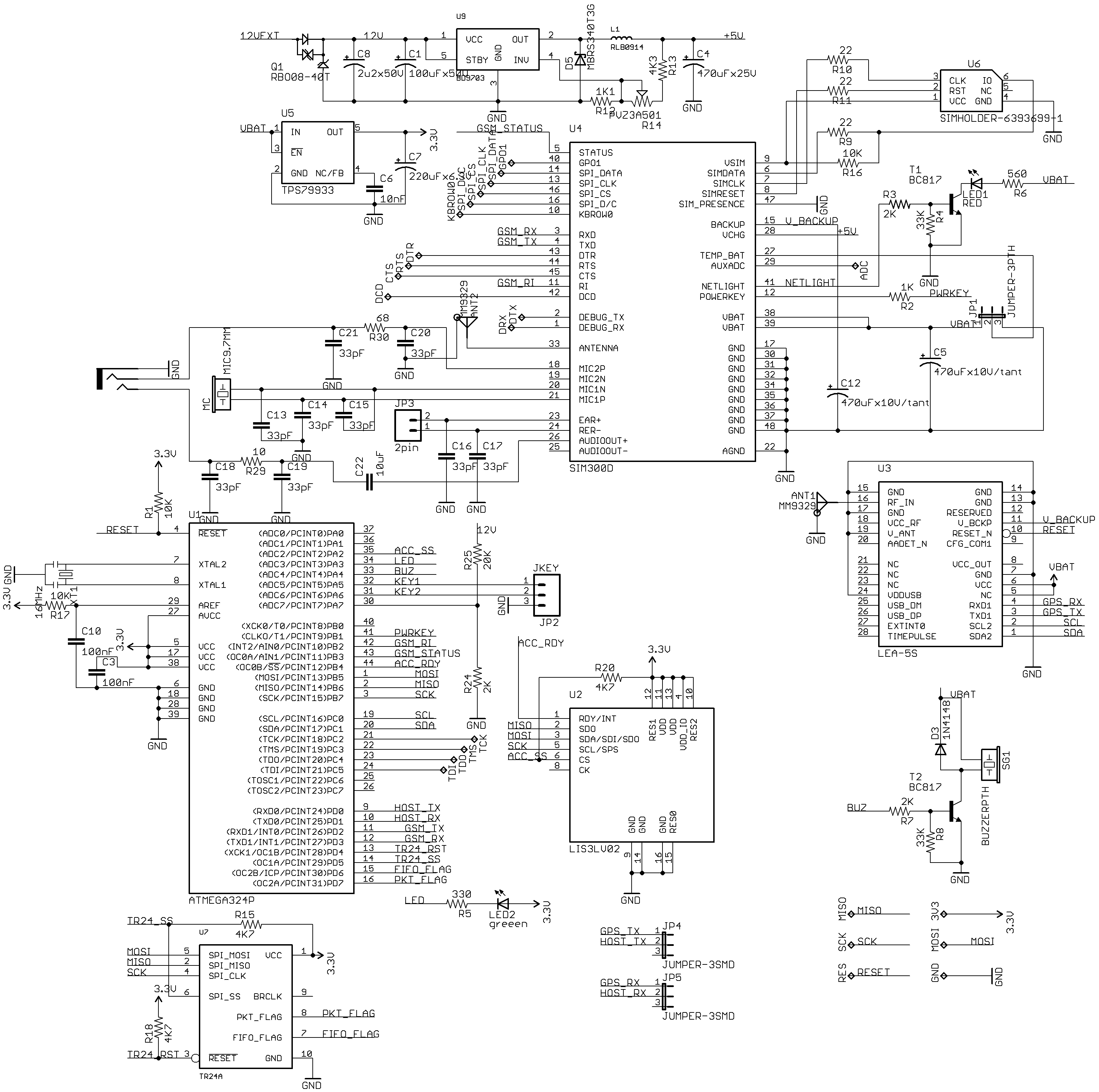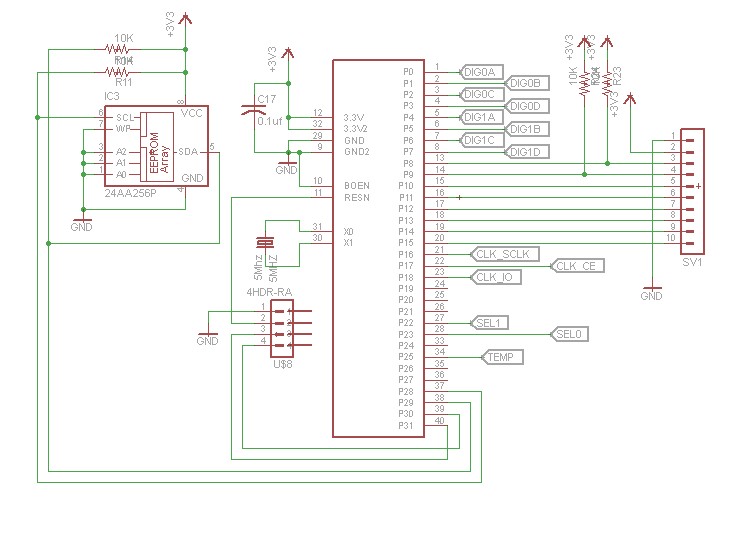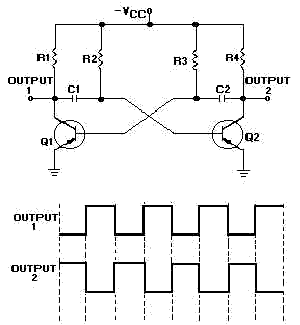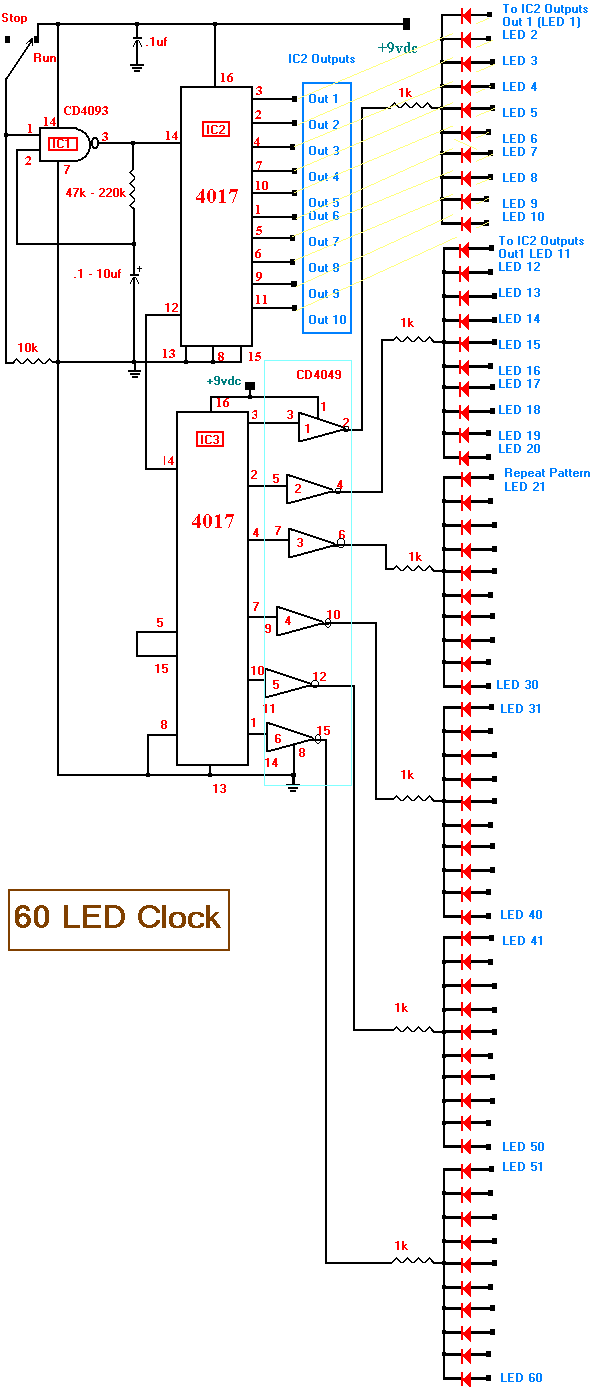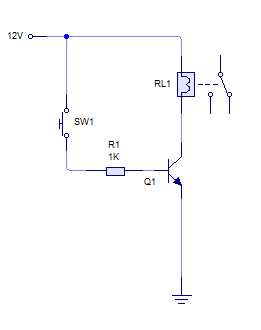
24 Second Shot Clock

This circuit is designed for use in a basketball shot clock. To initiate the 24-second countdown, both the 24s LOAD switch and the Reset switch must be pressed simultaneously. If this condition is not met, the countdown will begin at 99 seconds. A pulse input can be connected to a 555 astable multivibrator; however, it must be calibrated to ensure accurate real-time clock functionality. The PAUSE switch should incorporate a switch debouncer to ensure reliable counter operation.
The basketball shot clock circuit is structured to provide a visual countdown for basketball games, ensuring compliance with the timing regulations of the sport. The primary component of the circuit is a microcontroller or a timer IC, such as the 555 timer, which is configured in astable mode to generate the necessary clock pulses for the countdown.
The circuit includes a 24s LOAD switch, which, when pressed alongside the Reset switch, initializes the countdown timer to 24 seconds. This dual-switch mechanism is crucial to avoid accidental resets and ensure that the timer starts from the correct value during gameplay. If the switches are not pressed simultaneously, the timer defaults to a 99-second countdown, which may be used for other game scenarios or as a safety feature.
Incorporating a pulse input from the 555 timer allows for precise timing adjustments. Calibration of the 555 timer is essential to ensure that the output pulse frequency aligns with the desired countdown intervals. This calibration process may involve adjusting resistors and capacitors in the timer circuit to achieve the correct timing characteristics.
The PAUSE switch is an important feature that allows the operator to temporarily halt the countdown. To enhance the reliability of the PAUSE function, a switch debouncer is implemented. This component prevents false triggering caused by mechanical bouncing of the switch contacts, which can lead to unintended behavior in the timer operation. The debouncer can be realized using a simple RC (resistor-capacitor) circuit or by employing a more complex digital debouncing algorithm if a microcontroller is used.
Overall, this basketball shot clock circuit design emphasizes accuracy, reliability, and user control, making it suitable for use in competitive basketball environments. Proper implementation of the components and calibration will ensure that the circuit meets the demands of the game while providing clear and accurate timekeeping.This is a circuit intended to be used in basketball shot clock.Notes:To start in 24 seconds; 24s LOAD SW and Reset SW should be push simultaneously. If not, the count will start in 99. Pulse input can be connected to 555 astable multivibrator but must be calibrated for real time clock.
The PAUSE SW must have a Switch Debouncer so that the counter will coun.. 🔗 External reference
The basketball shot clock circuit is structured to provide a visual countdown for basketball games, ensuring compliance with the timing regulations of the sport. The primary component of the circuit is a microcontroller or a timer IC, such as the 555 timer, which is configured in astable mode to generate the necessary clock pulses for the countdown.
The circuit includes a 24s LOAD switch, which, when pressed alongside the Reset switch, initializes the countdown timer to 24 seconds. This dual-switch mechanism is crucial to avoid accidental resets and ensure that the timer starts from the correct value during gameplay. If the switches are not pressed simultaneously, the timer defaults to a 99-second countdown, which may be used for other game scenarios or as a safety feature.
Incorporating a pulse input from the 555 timer allows for precise timing adjustments. Calibration of the 555 timer is essential to ensure that the output pulse frequency aligns with the desired countdown intervals. This calibration process may involve adjusting resistors and capacitors in the timer circuit to achieve the correct timing characteristics.
The PAUSE switch is an important feature that allows the operator to temporarily halt the countdown. To enhance the reliability of the PAUSE function, a switch debouncer is implemented. This component prevents false triggering caused by mechanical bouncing of the switch contacts, which can lead to unintended behavior in the timer operation. The debouncer can be realized using a simple RC (resistor-capacitor) circuit or by employing a more complex digital debouncing algorithm if a microcontroller is used.
Overall, this basketball shot clock circuit design emphasizes accuracy, reliability, and user control, making it suitable for use in competitive basketball environments. Proper implementation of the components and calibration will ensure that the circuit meets the demands of the game while providing clear and accurate timekeeping.This is a circuit intended to be used in basketball shot clock.Notes:To start in 24 seconds; 24s LOAD SW and Reset SW should be push simultaneously. If not, the count will start in 99. Pulse input can be connected to 555 astable multivibrator but must be calibrated for real time clock.
The PAUSE SW must have a Switch Debouncer so that the counter will coun.. 🔗 External reference
